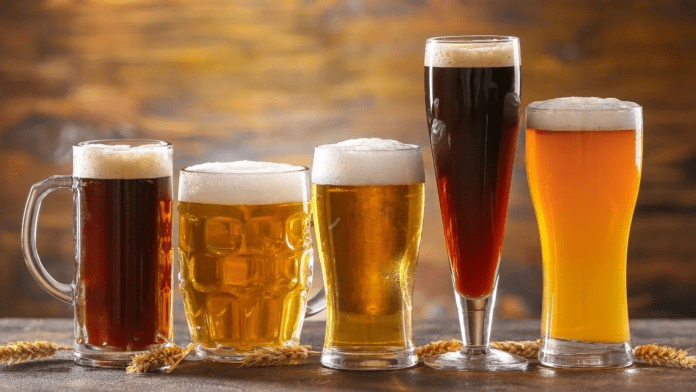ICRA anticipates that the domestic alcohol beverages (alcobev) industry in India will experience a consistent revenue growth of 8-10% in the fiscal year 2024. Following two challenging years in FY2021 and FY2022, primarily due to the impact of the pandemic, the Indian alcobev sector showed remarkable resilience and robust growth in FY2023. This resurgence was fueled by strong consumer demand in both the spirits and beer segments.
In FY2023, the companies included in ICRA’s sample set experienced an impressive year-over-year revenue growth of approximately 20%, reaching around INR 26 billion. This growth not only recovered the pre-COVID levels but surpassed them.
During the first quarter of FY2024, the spirits industry reported a noteworthy 13% year-on-year increase in revenues, even during what is typically considered a slower season for this segment. In contrast, the beer industry, which was in its peak season, saw a slight dip of around 1% in revenue, largely due to unexpected and unseasonal rainfall.
Speaking on this, Kinjal Shah, vice president and co-group head – corporate ratings, ICRA Limited, said: “ICRA expects alcobev consumption to remain steady, supported by growing urbanisation, rising disposable incomes, favourable demographics, and easing regulatory environment by some states. A sub-par monsoon with warm weather amid ongoing El Nino conditions will further drive demand, particularly for beer, in FY2024”.
Nonetheless, despite a consistent demand, ICRA’s sample set companies are anticipated to witness a further contraction in their operating profit margins (OPM) by approximately 90-140 basis points during FY2024. This follows a significant decline of 300 basis points in FY2023. The primary reason behind this expected margin contraction is the elevated prices of critical inputs in the current fiscal year, such as non-basmati rice and other grains, including maize, which are essential for the production of extra neutral alcohol (ENA), the key component used in spirit manufacturing.
The impact of a subpar monsoon, El Nino conditions, and government measures affecting grain prices will be pivotal in determining the cost structure of the industry.
Packing material expenses, notably for glass, have remained elevated, primarily due to the surge in soda ash prices. On the other hand, barley, the essential raw material for beer production, has experienced a recent correction in prices and is expected to stay stable in the short to medium term. Furthermore, the industry should keep a close watch on the availability and potential pricing pressures arising from the diversion of grains towards ethanol production, driven by heightened demand due to government blending regulations.
“The timely increase in the selling price of the alcobev products from state governments is the key to absorbing the rise in input costs. This typically happens on an annual basis at the beginning of a fiscal; hence, any mid-year raw material price volatility must be absorbed by the manufacturers. Some key states, including Karnataka, Haryana, Delhi, and Uttar Pradesh, have permitted the increase in prices of alcobev products for the current fiscal. Further, the Madhya Pradesh government expanded the distribution network for alcobev products last year, which continues to provide an upside to the industry in the current year as well,” Shah added.
In FY2023, ICRA’s sample set of companies made significant capital expenditures, amounting to approximately 5% of their revenues. However, this expenditure is projected to decrease to around 2-3% in both FY2024 and FY2025, primarily because key industry players have recently expanded their production capacities. The majority of the ongoing capacity expansion efforts are focused on beer manufacturing, with expectations for these expansions to materialize in the near to medium term. Some companies are also planning to expand their presence into new states and deepen their market penetration in existing regions.
ICRA foresees that the industry will maintain stable and healthy credit metrics, thanks to robust cash flow generation and limited debt accumulation.





